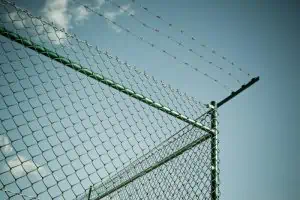How to Install Wood Fencing?
If you are looking for a way to fence in your yard, consider installing wood fencing. Wood fencing is a less expensive alternative to other types of fencing, but it will require more frequent upkeep. In addition, a wood fence can withstand wind pressure more effectively than other types of fencing.
(Looking for vinyl fence installation Missoula? Contact us today!)

First, choose your fence style. The style of your fence will determine the spacing between your posts. For example, a stair-stepped fence would have a larger gap between the pickets and the ground. A wavy or curved fence would require a shorter gap between the panels.
After choosing your style of fence, the next step is to mark your fence line. You will need to place wooden stakes at each corner of your fence. Stakes will help keep the line level and in line with your house. Also, you will need to make sure your fence is at least five inches above the ground. This will prevent water from standing on the ground, and will allow your wood to stay dry.
You will need to dig holes for your posts. Posts are made of wood, and should be buried at least two feet. However, if the soil is unstable, you may need to increase the depth. Digging can also damage underground utilities.
Once your fence posts are dug and sunk, you can add concrete to the holes. You can use ready-mix concrete bags. Or, you can mix your own mixture using one gallon of water per bag of dry concrete. Just be careful not to dig too deep. Add some dirt to the bottom of each hole to protect the posts. When you’re done, pour the concrete into the posthole and let it set for at least 24 hours. Alternatively, you can saturate the concrete with a hose to help it set faster.
Once you’ve completed the fencing project, you can apply a protective stain/sealer to your fence. This will help protect the wood from UV rays and rot. It also allows you to choose the color tone of your new fence.
Installing a fence can be a long and complicated process, but with the right tools and techniques, you can have your fence up and running in no time. Whether you’re building a fence for a private property or for a community park, make sure to consult with your local municipality for the required permits and fees. Depending on your location, you can expect to pay from $200 to $600 for your fence project.
Fence installation costs will depend on your home, the type of materials you use, and the size and layout of your fence. Generally, labor costs range from $17 to $45 per linear foot. Additional costs will include permits and land surveying. Those who hire a professional or a master craftsman to do the work will pay higher prices. Getting a permit will cost between $375 and $700. While you’re working on your fence, you should be cautious to avoid obstructing your neighbor’s view.

